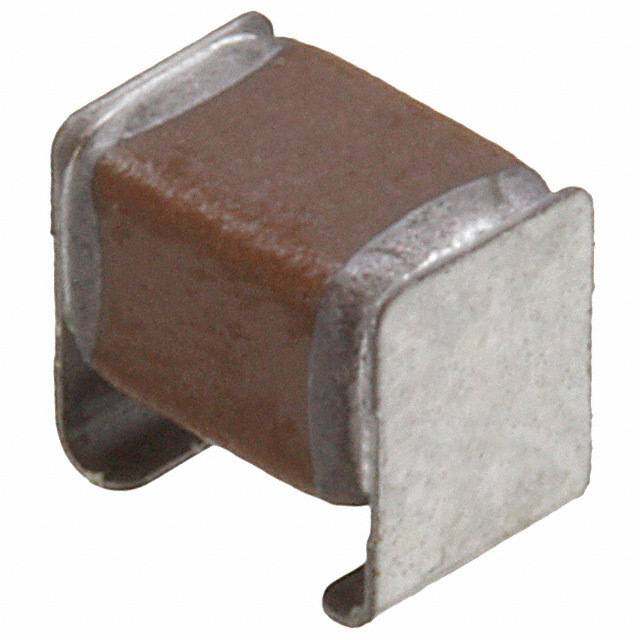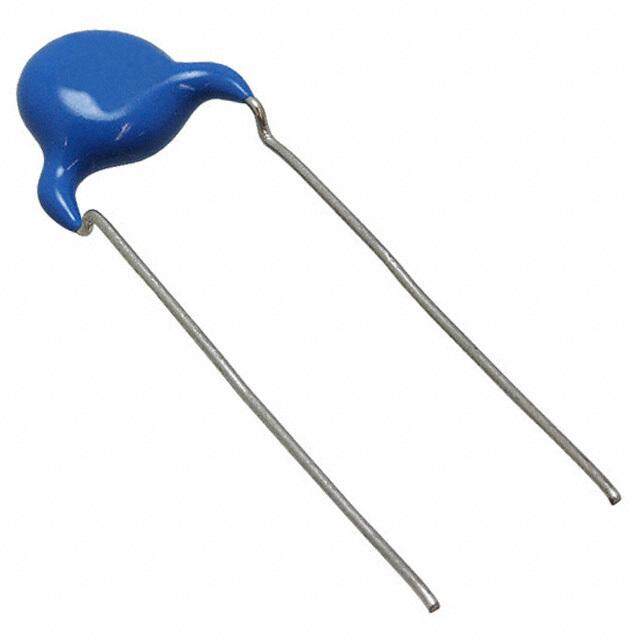- 型号: GA342DR7GF221KW02L
- 制造商: Murata
- 库位|库存: xxxx|xxxx
- 要求:
| 数量阶梯 | 香港交货 | 国内含税 |
| +xxxx | $xxxx | ¥xxxx |
查看当月历史价格
查看今年历史价格
GA342DR7GF221KW02L产品简介:
ICGOO电子元器件商城为您提供GA342DR7GF221KW02L由Murata设计生产,在icgoo商城现货销售,并且可以通过原厂、代理商等渠道进行代购。 GA342DR7GF221KW02L价格参考¥3.74-¥4.68。MurataGA342DR7GF221KW02L封装/规格:陶瓷电容器, 220pF ±10% 250V 陶瓷电容器 X7R 1808(4520 公制)。您可以下载GA342DR7GF221KW02L参考资料、Datasheet数据手册功能说明书,资料中有GA342DR7GF221KW02L 详细功能的应用电路图电压和使用方法及教程。
Murata Electronics North America的陶瓷电容器型号GA342DR7GF221KW02L属于多层陶瓷电容器(MLCC)的一种。该型号具备特定的电气特性和封装尺寸,适用于多种电子设备和电路中。 该电容的主要应用场景包括: 1. 电源管理电路:用于去耦、滤波,稳定电源电压,减少噪声干扰,提升系统稳定性。 2. 消费类电子产品:如智能手机、平板电脑、笔记本电脑等便携设备中,作为高频旁路电容或信号耦合元件。 3. 通信设备:在无线通信模块、基站、路由器等设备中,用于射频信号处理和滤波。 4. 工业控制系统:用于PLC、传感器、电机驱动器等设备中的滤波与稳压功能。 5. 汽车电子系统:如车载娱乐系统、ECU(电子控制单元)、ADAS辅助驾驶系统中,提供高可靠性的电容支持。 6. 嵌入式系统与物联网设备:因其小型化和高性能特点,广泛应用于各类嵌入式控制器和IoT终端产品中。 综上所述,Murata GA342DR7GF221KW02L陶瓷电容器凭借其良好的频率响应、温度稳定性和可靠性,广泛应用于消费电子、通信、工业及汽车等多个领域。
| 参数 | 数值 |
| 产品目录 | |
| 描述 | CAP CER 220PF 250VAC X7R 1808多层陶瓷电容器MLCC - SMD/SMT 1808 220pF 250Vac X7R 10% |
| 产品分类 | |
| 品牌 | Murata Electronics North America |
| 产品手册 | |
| 产品图片 |
|
| rohs | 符合RoHS无铅 / 符合限制有害物质指令(RoHS)规范要求 |
| 产品系列 | MLCC,多层陶瓷电容器MLCC - SMD/SMT,Murata Electronics GA342DR7GF221KW02LGA3 |
| 数据手册 | 点击此处下载产品Datasheet点击此处下载产品Datasheet点击此处下载产品Datasheet点击此处下载产品Datasheet点击此处下载产品Datasheet |
| 产品型号 | GA342DR7GF221KW02L |
| 产品 | Safety Certified MLCCs |
| 产品目录绘图 |
|
| 产品目录页面 | |
| 产品种类 | 多层陶瓷电容器MLCC - SMD/SMT |
| 其它名称 | 490-3473-2 |
| 包装 | 带卷 (TR) |
| 厚度(最大值) | 0.087"(2.20mm) |
| 商标 | Murata Electronics |
| 外壳代码-in | 1808 |
| 外壳代码-mm | 4520 |
| 外壳宽度 | 2 mm |
| 外壳长度 | 4.5 mm |
| 外壳高度 | 2 mm |
| 大小/尺寸 | 0.177" 长 x 0.079" 宽(4.50mm x 2.00mm) |
| 安装类型 | 表面贴装,MLCC |
| 容差 | ±10% |
| 封装 | Reel |
| 封装/外壳 | 1808(4520 公制) |
| 封装/箱体 | 1808 (4520 metric) |
| 工作温度 | -55°C ~ 125°C |
| 工作温度范围 | - 55 C to + 125 C |
| 工厂包装数量 | 2000 |
| 应用 | 安全 |
| 引线形式 | - |
| 引线间距 | - |
| 最大工作温度 | + 125 C |
| 最小工作温度 | - 55 C |
| 标准包装 | 2,000 |
| 温度系数 | X7R |
| 温度系数/代码 | +/- 15 % |
| 特性 | - |
| 特色产品 | http://www.digikey.com/cn/zh/ph/Murata/GA3.html |
| 电介质 | X7R |
| 电压-额定 | 250VAC |
| 电压额定值 | 250 VAC |
| 电压额定值AC | 250 V |
| 电容 | 220pF |
| 端接类型 | SMD/SMT |
| 等级 | X1Y2 |
| 类型 | Safety Standard Certified Class X1/Y2 |
| 系列 | GA3 |
| 高度-安装(最大值) | - |




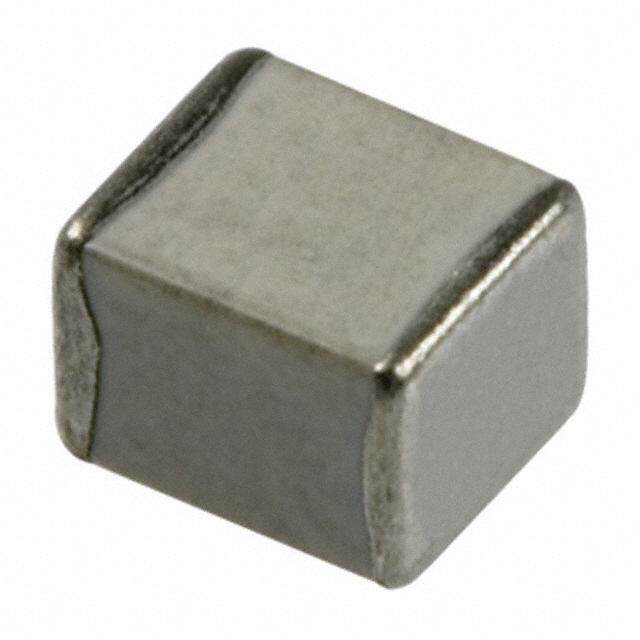

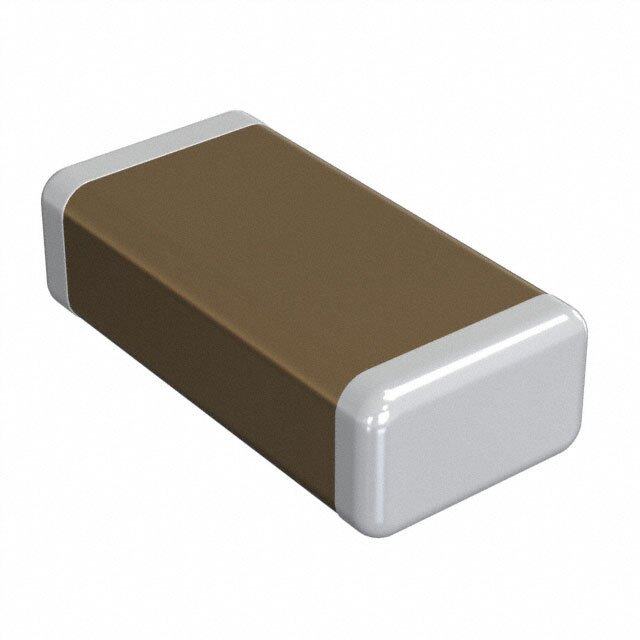

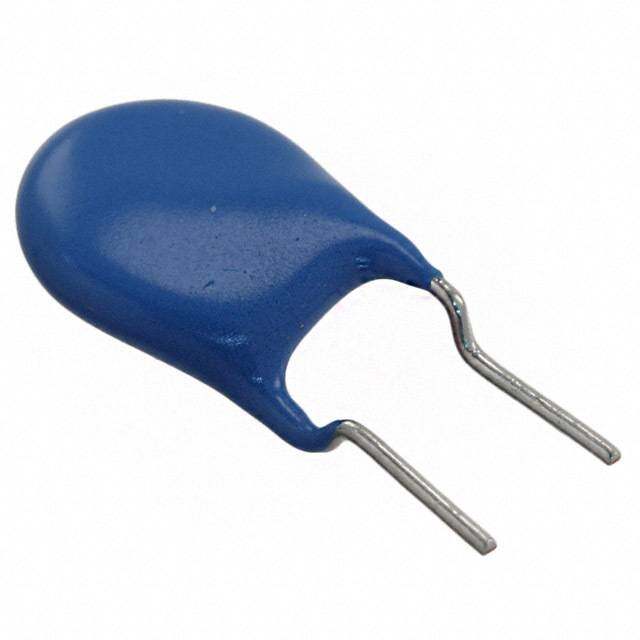

- 商务部:美国ITC正式对集成电路等产品启动337调查
- 曝三星4nm工艺存在良率问题 高通将骁龙8 Gen1或转产台积电
- 太阳诱电将投资9.5亿元在常州建新厂生产MLCC 预计2023年完工
- 英特尔发布欧洲新工厂建设计划 深化IDM 2.0 战略
- 台积电先进制程称霸业界 有大客户加持明年业绩稳了
- 达到5530亿美元!SIA预计今年全球半导体销售额将创下新高
- 英特尔拟将自动驾驶子公司Mobileye上市 估值或超500亿美元
- 三星加码芯片和SET,合并消费电子和移动部门,撤换高东真等 CEO
- 三星电子宣布重大人事变动 还合并消费电子和移动部门
- 海关总署:前11个月进口集成电路产品价值2.52万亿元 增长14.8%
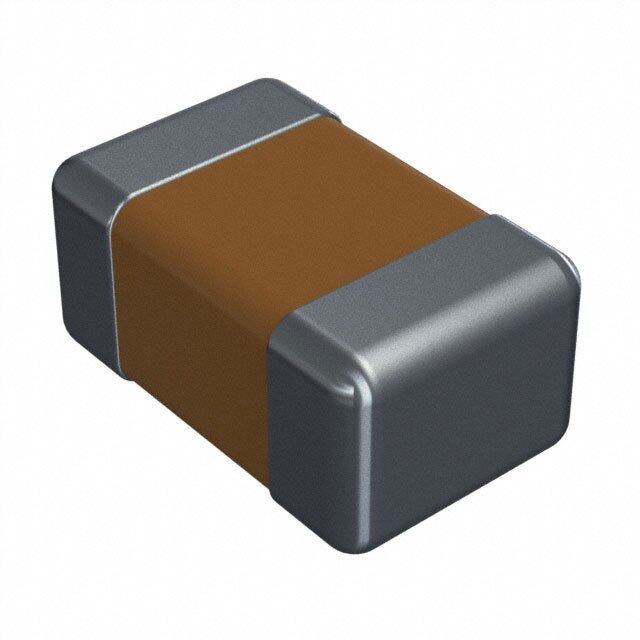
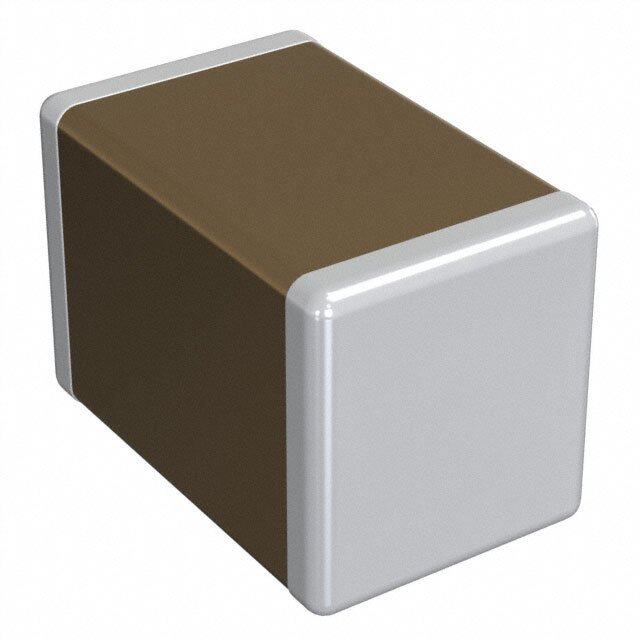

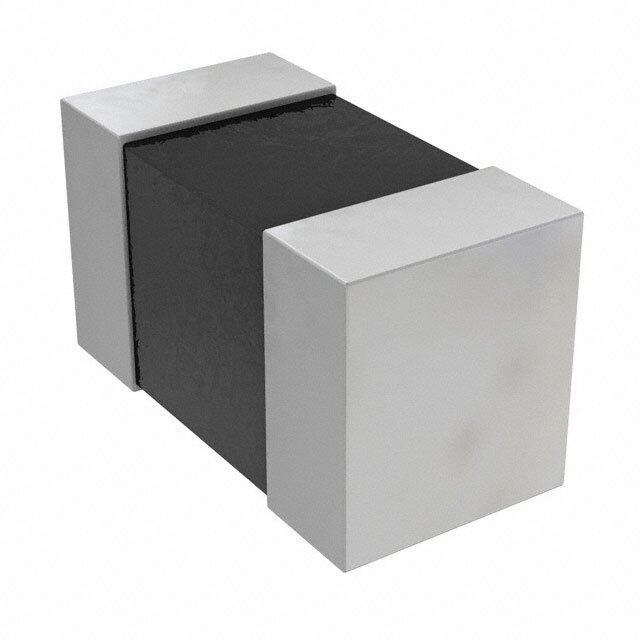

PDF Datasheet 数据手册内容提取
Safety Standard Certified Chip Multilayer Ceramic Capacitors for General Purpose GA342DR7GF221KW02_ (1808, X7R:EIA, 220pF, AC250V) _: packaging code Reference Sheet 1.Scope This specification is applied to following safety standard certified Chip Multilayer Ceramic Capacitors Type GF. Type GF is safety standard certified Chip Multilayer Ceramic Capacitors of IEC60384-14 Class:Y2, ClassX1/Y2. <Standard No/*Certificate No> Size:4.5x2.0mm UL:UL60950-1/E316111、SEMKO:EN60384-14,IEC60384-14/1611685(Certified except for insulating distance and applicabie only for the instruments critified by EN/IEC60950-1) Size:5.7x2.8mm Min. UL:UL60384-14/E37921、VDE:EN60384-14,IEC60384-14/40024096、SEMKO:EN60384-14,IEC60384-14/1611746 *Above Certificate No. may be changed on account of the revision of standards and the renewal of certification. Do not use these products in any automotive power train or safety equipment including battery chargers for electric vehicles and plugin hybrids. 2.MURATA Part NO. System (Ex.) GA3 42 D R7 GF 221 K W02 L Dim(1e)Ln/sWions Dim(e2n)Ts ions (C3)hTaeramcpteerriasttuicrse (4)Type Name C(5a)pNaocmitainnacle (6)TCoalpearacnitcaence (7)MuraCtao’dse Control (8)Packaging Code 3. Type & Dimensions (Unit:mm) (1)-1 L (1)-2 W (2) T e g 4.5±0.3 2.0±0.2 2.0±0.2 0.3 min. 2.5 min. ・Marking Type Name :Code Company Name:Abbreviation 4.Rated value (3) Temperature Characteristics Specifications and Test (6) (Public STD Code):X7R(EIA) Rated (5) Nominal Methods Capacitance Temp. coeff Temp. Range Voltage Capacitance (Operating Tolerance or Cap. Change (Ref.Temp.) Temp. Range) -55 to 125 °C -15 to 15 % AC 250 V 220 pF ±10 % -55 to 125 °C (25 °C) ・(4) Type Name This denotes safety certified type name GF. ・Soldering Method Reflow 5.Package mark (8) Packaging Packaging Unit f180mm Reel L 2000 pcs./Reel EMBOSSED W12P4 f330mm Reel K 8000 pcs./Reel EMBOSSED W12P4 Product specifications in this catalog are as of Dec.9,2019,and are subject to change or obsolescence without notice. Please consult the approval sheet before ordering. Please read rating and !Cautions first. GA342DR7GF221KW02-01 1
■ Specifications and Test Methods Test Method No Item Specification (Ref. Standard:JIS C 5101, IEC60384) 1 Appearance No defects or abnormalities. Visual inspection. 2 Dimension Within the specified dimensions. Using calipers and micrometers. 3 Voltage proof No defects or abnormalities. Measurement Point : Between the terminations Test Voltage : AC2000V(r.m.s.) Applied Time : 60+/-1s Charge/discharge current : 50mA max. 4 Impulse voltage No self healing break downs or flash-overs have taken place 10 impulse of alternating polarity is subjected. (5 impulse for each polarity) in the capacitor. The interval between impulse is 60s. Applied Voltage: 2.5kV0-p 5 Insulation Resistance(I.R.) 6000MΩ or more Measurement Point : Between the terminations Measurement Voltage : DC500+/-50V Charging Time : 60+/-5s Charge/discharge current : 50mA max. Measurement Temperature: Room Temperature 6 Capacitance Shown in Rated value. Measurement Temperature:Room Temperature Measurement Frequency :1.0+/-0.1kHz 7 Dissipation Factor (D.F.) 0.025 max. Measurement Voltage :AC1.0+/-0.2V(r.m.s.) 8 Temperature R7 : Within +/-15% (-55°C to +125°C) The capacitance change should be measured after 5 min. Characteristics at each specified temp. stage. of Capacitance C apacitance value as a reference is the value in step 3. Step Temperature(C) 1 Reference Temp.+/-2 2 Min.Operating Temp. +/-3 3 Reference Temp. +/-2 4 Max.Operating Temp. +/-3 5 Reference Temp. +/-2 ・Pretreatment Perform a heat treatment at 150+0/-10°C for 1h+/-5min and then let sit for 24+/-2h at room condition*. 9 Vibration Appearance No defects or abnormalities. Solder the capacitor on the test substrate A shown in "Complement of Test method”. Capacitance Within the specified initial value. Kind of Vibration : A simple harmonic motion 10Hz to 55Hz to 10Hz (1min) Total amplitude : 1.5mm D.F. Within the specified initial value. This motion should be applied for a period of 2h in each 3 mutually perpendicular directions(total of 6h). 10 Solderability 95% of the terminations is to be soldered evenly and Test Method : Solder bath method continuously. Flux : Solution of rosin ethanol 25(wt)% Preheat : 80℃ to 120℃ for 10s to 30s Solder : Sn-3.0Ag-0.5Cu (Lead Free Solder) Solder Temp. : 245+/-5℃ Immersion time : 2+/-0.5s Immersing in speed : 25+/-2.5mm/s. 11 Resistance Appearance No defects or abnormalities. Test Method : Solder bath method to Solder : Sn-3.0Ag-0.5Cu (Lead Free Solder) Soldering Solder Temp. : 260+/-5℃ Heat Capacitance Within +/-10% Immersion time : 10+/-1s Change Immersing in speed : 25+/-2.5mm/s. Exposure Time : 24+/-2h at room condition*. I.R. 1000MΩ or more Preheat : GA342/52/55 size :100℃ to 120℃ for 1 min and 170℃ to 200℃ for 1 min ・Pretreatment Voltage proof No defects. Perform a heat treatment at 150+0/-10°C for 1h+/-5min and then let sit for 24+/-2h at room condition*. *Room Condition : Temperature:15 to 35°C, Relative humidity:45 to 75%, Atmosphere pressure:86 to 106kPa JEMCGS-03013C 2
Test Method No Item Specification (Ref. Standard:JIS C 5101, IEC60384) 12 Adhesive Strength No removal of the terminations or other defect Solder the capacitor on the test substrate A shown in "Complement of Test of Termination should occur. method”. 10N, 10+/-1s Applied Direction : In parallel with the test substrate and vertical with the capacitor side. 13 Substrate Appearance No defects or abnormalities. Solder the capacitor on the test substrate B shown in "Complement of Test Bending test method”. Then apply the force in the direction shown in “Test Method of Substrate Capacitance Within +/-12.5% Bending test” of “Complement of Test method”. Change Flexure : 1mm Holding Time : 5+/-1s Soldering Method : Reflow soldering 14 Temperature Appearance No defects or abnormalities. Fix the capacitor to the supporting Test substrate A (glass epoxy board) Sudden Change shown in “Complement of Test method”. Perform the 5 cycles according to the four heat treatments Capacitance Within +/-15% shown in the following table. Change Time Step Temp.(C) (min) 1 Min.Operating Temp.+0/-3 30+/-3 D.F. 0.05 max. 2 Room Temp 2 to 3 3 Max.Operating Temp.+3/-0 30+/-3 I.R. 3000MΩ or more 4 Room Temp 2 to 3 Exposure Time : 24+/-2h at room condition*. ・Pretreatment Voltage proof No defects. Perform a heat treatment at 150+0/-10°C for 1h+/-5min and then let sit for 24+/-2h at room condition*. 15 High Appearance No defects or abnormalities. Fix the capacitor to the supporting Test substrate B (glass epoxy board) Temperature shown in “Complement of Test method”. High Humidity (Steady) Capacitance Within +/-15% Before this test, the test shown in the following is performed. Change ・No.12 Adhesive Strength of Termination(apply force : 5N) ・No.13 Substrate Bending test D.F. 0.05 max. Test Temperature : 40+/-2℃ Test Humidity : 90% to 95%RH Test Time : 500+24/-0h I.R. 3000MΩ or more Applied Voltage : Rated voltage Exposure Time : 24+/-2h at room condition*. ・Pretreatment Voltage proof No defects. Perform a heat treatment at 150+0/-10°C for 1h+/-5min and then let sit for 24+/-2h at room condition*. 16 Durability Appearance No defects or abnormalities. Fix the capacitor to the supporting Test substrate B (glass epoxy board) shown in “Complement of Test method”. Before this test, the test shown in the following is performed. ・No.12 Adhesive Strength of Termination(apply force : 5N) Capacitance Within +/-20% ・No.13 Substrate Bending test Change Next, Impulse Voltage test is performed. Each individual capacitor shall be subjected to a 5kV Impulse (the voltage value means zero to peak) for 3 times. Then the capacitors are applied to life test. D.F. 0.05 max. Front time (T1) = 1.2μs=1.67T Time to half-value (T2) = 50μs I.R. 3000MΩ or more Apply voltage as Table for 1000h at 125+2/-0°C , relative humidity 50% max. Applied voltage AC425V(r.m.s.) , except that once each hour the voltage is increased to AC1000V(r.m.s.) for 0.1s. Voltage proof No defects. Exposure Time : 24+/-2h at room condition*. ・Pretreatment Perform a heat treatment at 150+0/-10°C for 1h+/-5min and then let sit for 24+/-2h at room condition*. *Room Condition : Temperature:15 to 35°C, Relative humidity:45 to 75%, Atmosphere pressure:86 to 106kPa JEMCGS-03013C 3
Test Method No Item Specification (Ref. Standard:JIS C 5101, IEC60384) 17 Passive flammability The burning time shall not be exceeded the time 30s. The capacitor under test shall be held in the flame in the position which The tissue paper shall not ignite. best promotes burning. Each specimen shall only be exposed once to the flame. Time of exposure to flame : 30 s. Length of flame : 12+/-1mm Gas burner : Length 35mm min. Inside dia : 0.5+/-0.1mm Outside dia : 0.9mm max. Gas : Butane gas purity 95% min. Test specimen Approximately 8mm burner flame 200+/-5㎜ 45 Tissue paper Wood board of approximately 10mm in thickness 18 Active flammability The cheesecloth shall not be on fire. The specimens shall be individually wrapped in at least one but more than two complete layers of cheesecloth. The specimens shall be subjected to 20 discharges. The interval between successive discharges shall be 5s. The UAC shall be maintained for 2minutes after the last discharge. S1 F L1 L2 R S2 Ui S3 C1 C2 C3 Cx Ct Ut U- Tr L3 L4 Oscilloscope C1,C2 : Filter capacitor 1µF+/-10% C3 : Capacitor 0.033µF+/-5% L1 to L4 : Rod coa choke 1.5mH+/-20%, 16A R : Resistor 100Ω+/-2% Cx<0.068µF Ct : Tank capacitor 3µF+/-5% 10kV Cx≦1µF U- : UR+/-5% UR : Rated Voltage Cx : Capacitor under test F : Slow-blow fuse, rated 16A Ut : Voltage to which the tank capacitor Ct is charged *Room Condition : Temperature:15 to 35°C, Relative humidity:45 to 75%, Atmosphere pressure:86 to 106kPa JEMCGS-03013C 4
Complement of Test Method 1.Test substrate The test substrate should be Substrate A or Substrate B as described in “Specifications and Test methods”. The specimen should be soldered by the conditions as described below. Soldering Method : Reflow soldering Solder : Sn-3.0Ag-0.5Cu (1) Test Substrate A ・Land Dimensions Chip Capacitor Land Dimension (mm) Type c a b c GA342 3.5 7.0 2.4 GA352 4.5 8.0 3.2 GA355 4.5 8.0 5.6 a Solder Resist b ・Material : Glass Epoxy Board ・Thickness : 1.6mm ・Thickness of copper foil : 0.035mm (1) Test Substrate B a d c Dimension of pettern (mm) Type a b c d 0 4 GA342 3.5 7.0 2.4 1.0 (f4.5) GA352 4.5 8.0 3.2 1.0 GA355 4.5 8.0 5.6 1.0 b 1.6 100 Copper foil Solder resist (unit : mm) ・Material : Glass Epoxy Board ・Thickness of copper foil : 0.035mm 2. Test Method of Substrate Bending test a) Support state (b) Test state Test SubstrateB Test Substrate B 20 a Capacitor b n. Support stand(f5) mi 0 5 45+/-2 45+/-2 Test stand Pressure stick Support stand a:+/-2 gap between support stand center and test stand b:+/-5 gap between support stand center and test stand center (unit : mm) ·Material of Test stand and pressure stick The material shoud be a metal where a remarkable transformation and the distortion are not caused even if it is pressurized. ·Pressurizing speed The pressurizing speed is pressurized at the speed of about 1mm/s until the flexure reaches a regulated value. Pressure stick F Capacitor R5 L Support 45 45 Support stand JEMCGS-03013C 5
Package (1) Appearance of taping (a) Paper Tape Bottom Tape (Thickness: Around 50m) is attached below Base Tape with sprocket and put Top Tape (Thickness: Around 50m) on capacitor. (b) Plastic Tape Cover Tape (Thickness: Around 60m) is put on capacitor on Base Tape (Blister carrier Tape). (c) The sprocket holes are to the right as the Tape is pulled toward the user. (2) Packed chips Capacitor (3) Dimensions of Tape (a) Type A (Dimensions of chip : Apply to 4.5x2.0) 1 0. f1.5+0.1/-0 ± 5 4.0±0.1 7 1. 0.3±0.1 4.0±0.1 2.0±0.05 3 0. ± 0 B 12. 05 3.7max. A 0. (Unit : mm) ± 5 5. Dimensions of chip A* B* [L×W] 4.5×2.0 2.5 5.1 Dimensions of A,B : Nominal value (b) Type B (Dimensions of chip : Apply to 4.5x3.2 to 5.7x5.0) 1 2.0±0.05 0. ± f1.5+0.1/-0 0.3±0.1 5 8.0±0.1 4.0±0.1 1.7 3 0. ± 12.0 A B 0.05 3.7max. (Unit : mm) ± 5 5. Dimensions of chip A* B* [L×W] 4.5×3.2 3.6 4.9 5.7×2.8 3.2 6.1 Dimensions of A,B : Nominal value 5.7×5.0 5.4 6.1 JEMCGP-03075 6
Package (4) Dimensions of Reel 13.0±1.0 : Tape width 8mm 17.0±1.0 : Tape width 12mm 0 - 2.0±0.5 1/ + f21±0.8 60 5 1. - 0/ + f13±0.2 0 8 1 9.0+1.0/-0 : Tape width 8mm 13.0+1.0/-0 : Tape width 12mm (Unit : mm) (5) Part of the leader and part of the empty tape shall be attached to the end of the tape as follows. Vacant section : 160 min. Chip-mounting unit Vacant section : 190 min. 210 min. (Unit : mm) Direction of feed (6) The top tape or cover tape and base tape are not attached at the end of the tape for a minimum of 5 pitches. (7) Missing capacitors number within 0.1% of the number per reel or 1pc, whichever is greater, and not continuous. (8) The top tape or cover tape and bottom tape shall not protrude beyond the edges of the tape and shall not cover sprocket holes. (9) Cumulative tolerance of sprocket holes, 10 pitches : ±0.3mm. (10) Peeling off force : 0.1 to 0.6N in the direction shown on the follows. 165 to 180° Top Tape or Cover Tape Base Tape JEMCGP-03075 7
! Caution ■Limitation of Applications Please contact us before using our products for the applications listed below which require especially high reliability for the prevention of defects which might directly cause damage to the third party's life, body or property. ①Aircraft equipment ②Aerospace equipment ③Undersea equipment ④Power plant control equipment ⑤Medical equipment ⑥Transportation equipment(vehicles,trains,ships,etc.) ⑦Traffic signal equipment ⑧Disaster prevention / crime prevention equipment ⑨Data-processing equipment ⑩Application of similar complexity and/or reliability requirements to the applications listed in the above. ■Storage and Operation condition 1. The performance of chip multilayer ceramic capacitors (henceforth just "capacitors") may be affected by the storage conditions. Please use them promptly after delivery. 1-1. Maintain appropriate storage for the capacitors using the following conditions: Room Temperature of +5℃ to +40℃ and a Relative Humidity of 20% to 70%. High temperature and humidity conditions and/or prolonged storage may cause deterioration of the packaging materials. If more than six months have elapsed since delivery, check packaging, mounting, etc. before use. In addition, this may cause oxidation of the electrodes. If more than one year has elapsed since delivery, also check the solderability before use. 1-2. Corrosive gas can react with the termination (external) electrodes or lead wires of capacitors, and result in poor solderability. Do not store the capacitors in an atmosphere consisting of corrosive gas (e.g.,hydrogen sulfide, sulfur dioxide, chlorine, ammonia gas etc.). 1-3. Due to moisture condensation caused by rapid humidity changes, or the photochemical change caused by direct sunlight on the terminal electrodes, the solderability and electrical performance may deteriorate. Do not store capacitors under direct sunlight or in high huimidity conditions. JEMCGC-02981F 8
! Caution ■Rating 1.Temperature Dependent Characteristics 1. The electrical characteristics of the capacitor can change with temperature. 1-1. For capacitors having larger temperature dependency, the capacitance may change with temperature changes. The following actions are recommended in order to ensure suitable capacitance values. (1) Select a suitable capacitance for the operating temperature range. (2) The capacitance may change within the rated temperature. When you use a high dielectric constant type capacitor in a circuit that needs a tight (narrow) capacitance tolerance (e.g., a time-constant circuit), please carefully consider the temperature characteristics, and carefully confirm the various characteristics in actual use conditions and the actual system. 2.Measurement of Capacitance 1. Measure capacitance with the voltage and frequency specified in the product specifications. 1-1. The output voltage of the measuring equipment may decrease occasionally when capacitance is high. Please confirm whether a prescribed measured voltage is impressed to the capacitor. 1-2. The capacitance values of high dielectric constant type capacitors change depending on the AC voltage applied. Please consider the AC voltage characteristics when selecting a capacitor to be used in a AC circuit. 3.Applied Voltage 1. Do not apply a voltage to the capacitor that exceeds the rated voltage as called out in the specifications. 1-1. Applied voltage between the terminals of a capacitor shall be less than or equal to the rated voltage. (1) When AC voltage is superimposed on DC voltage, the zero-to-peak voltage shall not exceed the rated DC voltage. When AC voltage or pulse voltage is applied, the peak-to-peak voltage shall not exceed the rated DC voltage. (2) Abnormal voltages (surge voltage, static electricity, pulse voltage, etc.) shall not exceed the rated DC voltage. Typical Voltage Applied to the DC capacitor DC Voltage DC Voltage+AC AC Voltage Pulse Voltage E E E 0 E 0 0 0 (E:Maximum possible applied voltage.) 1-2. Influence of over voltage Over voltage that is applied to the capacitor may result in an electrical short circuit caused by the breakdown of the internal dielectric layers . The time duration until breakdown depends on the applied voltage and the ambient temperature. 2. Use a safety standard certified capacitor in a power supply input circuit (AC filter), as it is also necessary to consider the withstand voltage and impulse withstand voltage defined for each device. JEMCGC-02981F 9
! Caution 4.Type of Applied Voltage and Self-heating Temperature 1.Confirm the operating conditions to make sure that no large current is flowing into the capacitor due to the continuous application of an AC voltage or pulse voltage. When a DC rated voltage product is used in an AC voltage circuit or a pulse voltage circuit, the AC current or pulse current will flow into the capacitor; therefore check the self-heating condition. Please confirm the surface temperature of the capacitor so that the temperature remains within the upper limits of the operating temperature, including the rise in temperature due to self-heating. When the capacitor is used with a high-frequency voltage or pulse voltage, heat may be generated by dielectric loss. <Applicable to Temperature Characteristic X7R(R7)> 1-1. The load should be contained so that the self-heating of the capacitor body remains below 20°C, when measuring at an ambient temperature of 25°C. In addition, use a K thermocouple of ø0.1mm with less heat capacity when measuring, and measure in a condition where there is no effect from the radiant heat of other components or air flow caused by convection. Excessive generation of heat may cause deterioration of the characteristics and reliability of the capacitor. (Absolutely do not perform measurements while the cooling fan is operating, as an accurate measurement may not be performed.) 5. DC Voltage and AC Voltage Characteristic 1. The capacitance value of a high dielectric constant type capacitor changes depending on the DC voltage applied. Please consider the DC voltage characteristics when a capacitor is selected for use in a DC circuit. 1-1. The capacitance of ceramic capacitors may change sharply depending on the applied voltage. (See figure) Please confirm the following in order to secure the capacitance. (1) Determine whether the capacitance change caused by the applied voltage is within the allowed range . (2) In the DC voltage characteristics, the rate of capacitance change becomes larger as voltageincreases, even if the applied voltage is below the rated voltage. When a high dielectric constant type capacitor is used in a circuit that requires a tight (narrow) capacitance tolerance (e.g., a time constant circuit), please carefully consider the voltage characteristics, and confirm the various characteristics in the actual operating conditions of the system. 2. The capacitance values of high dielectric constant type capacitors changes depending on the AC voltage applied. Please consider the AC voltage characteristics when selecting a capacitor to be used in an AC circuit. 6. Capacitance Aging 1. The high dielectric constant type capacitors have an Aging characteristic in which the capacitance value decreases with the passage of time. When you use a high dielectric constant type capacitors in a circuit that needs a tight (narrow) capacitance tolerance (e.g., a time-constant circuit), please carefully consider the characteristics of these capacitors, such as their aging, voltage, and temperature characteristics. In addition, check capacitors using your actual appliances at the intended environment and operating conditions. 7.Vibration and Shock 1. Please confirm the kind of vibration and/or shock, its condition, and any generation of resonance. Please mount the capacitor so as not to generate resonance, and do not allow any impact on the terminals. 2. Mechanical shock due to being dropped may cause damage or a crack in the dielectric material of the capacitor. Do not use a dropped capacitor because the quality and reliability Crack may be deteriorated. Floor 3. When printed circuit boards are piled up or handled, the corner of another printed circuit board Mounting printed circuit board should not be allowed to hit the capacitor in order to avoid Crack a crack or other damage to the capacitor. JEMCGC-02981F 10
! Caution ■Soldering and Mounting 1.Mounting Position 1. Confirm the best mounting position and direction that minimizes the stress imposed on the capacitor during flexing or bending the printed circuit board. 1-1.Choose a mounting position that minimizes the stress imposed on the chip during flexing or bending of the board. [Component Direction] ① Locate chip horizontal to the direction in which stress acts. 1A (Bad Example) (Good Example) [Chip Mounting Close to Board Separation Point] It is effective to implement the following measures, to reduce stress in separating the board. It is best to implement all of the following three measures; however, implement as many measures as possible to reduce stress. Contents of Measures Stress Level (1) Turn the mounting direction of the component parallel to the board separation surface. A > D *1 (2) Add slits in the board separation part. A > B (3) Keep the mounting position of the component away from the board separation surface. A > C ① C Perforation B D 1A A Slit 1B ③ ② 1C *1 A > D is valid when stress is added vertically to the perforation as with Hand Separation. If a Cutting Disc is used, stress will be diagonal to the PCB, therefore A > D is invalid. [Mounting Capacitors Near Screw Holes] When a capacitor is mounted near a screw hole, it may be affected by the board deflection that occurs during the tightening of the screw. Mount the capacitor in a position as far away from the screw holes as possible. Recommended Screw Hole 2.Information before Mounting 1. Do not re-use capacitors that were removed from the equipment. 2. Confirm capacitance characteristics under actual applied voltage. 3. Confirm the mechanical stress under actual process and equipment use. 4. Confirm the rated capacitance, rated voltage and other electrical characteristics before assembly. 5. Prior to use, confirm the solderability of capacitors that were in long-term storage. 6. Prior to measuring capacitance, carry out a heat treatment for capacitors that were in long-term storage. 7.The use of Sn-Zn based solder will deteriorate the reliability of the MLCC. Please contact our sales representative or product engineers on the use of Sn-Zn based solder in advance. JEMCGC-02981F 11
! Caution 3.Maintenance of the Mounting (pick and place) Machine 1. Make sure that the following excessive forces are not applied to the capacitors. Check the mounting in the actual device under actual use conditions ahead of time. 1-1. In mounting the capacitors on the printed circuit board, any bending force against them shall be kept to a minimum to prevent them from any damage or cracking. Please take into account the following precautions and recommendations for use in your process. (1) Adjust the lowest position of the pickup nozzle so as not to bend the printed circuit board. [Incorrect] Suction Nozzle Deflection Board Board Guide [Correct] Support Pin 2.Dirt particles and dust accumulated in the suction nozzle and suction mechanism prevent the nozzle from moving smoothly. This creates excessive force on the capacitor during mounting, causing cracked chips. Also, the locating claw, when worn out, imposes uneven forces on the chip when positioning, causing cracked chips. The suction nozzle and the locating claw must be maintained, checked and replaced periodically. JEMCGC-02981F 12
! Caution 4-1.Reflow Soldering 1. When sudden heat is applied to the components, the [Standard Conditions for Reflow Soldering] mechanical strength of the components will decrease because a sudden temperature change causes Temperature(℃) deformation inside the components. In order to prevent Soldering Peak Temperature mreeqcuhiraendi cfoarl dbaomtha tghee tcoo mthpeo cnoemnptso annedn ttsh, ep rPeChBea.ting is 220℃ GCoraodliunagl ΔT Preheating conditions are shown in table 1. It is required to 190℃ 170℃ keep the temperature differential between the solder and 150℃ the components surface (ΔT) as small as possible. Preheating 2. When components are immersed in solvent after mounting, Time be sure to maintain the temperature difference (ΔT) 60-120 seconds 30-60 seconds between the component and the solvent within the range shown in the table 1. Table 1 [Allowable Reflow Soldering Temperature and Time] Temperature Series Chip Dimension(L/W) Code Differential ℃) 280 GA□ 42/43/52/55 ΔT≦130℃ erature( 227600 p Tem 250 ng 240 eri Recommended Conditions old 230 Lead Free Solder S 220 0 30 60 90 120 Soldering Time(s) Peak Temperature 240 to 260℃ In the case of repeated soldering, the accumulated soldering time must be within the range shown above. Atmosphere Air or N 2 Lead Free Solder : Sn-3.0Ag-0.5Cu 3. When a capacitor is mounted at a temperature lower than the peak reflow temperature recommended by the solder manufacturer, the following quality problems can occur. Consider factors such as the placement of peripheral components and the reflow temperature setting to prevent the capacitor’s reflow temperature from dropping below the peak temperature specified. Be sure to evaluate the mounting situation beforehand and verify that none of the following problems occur. ・Drop in solder wettability ・Solder voids ・Possible occurrence of whiskering ・Drop in bonding strength ・Drop in self-alignment properties ・Possible occurrence of tombstones and/or shifting on the land patterns of the circuit board 4. Optimum Solder Amount for Reflow Soldering 4-1. Overly thick application of solder paste results in a excessive solder fillet height. This makes the chip more susceptible to mechanical and thermal stress on the board and may cause the chips to crack. 4-2. Too little solder paste results in a lack of adhesive strength on the termination, which may result in chips breaking loose from the PCB. 4-3. Please confirm that solder has been applied smoothly to the termination. Inverting the PCB Make sure not to impose any abnormal mechanical shocks to the PCB. JEMCGC-02981F 13
! Caution 4-2.Flow Soldering 1. This product is not apply flow soldering. 4-3.Correction of Soldered Portion When sudden heat is applied to the capacitor, distortion caused by the large temperature difference occurs internally, and can be the cause of cracks. Capacitors also tend to be affected by mechanical and thermal stress depending on the board preheating temperature or the soldering fillet shape, and can be the cause of cracks. Please refer to "1. PCB Design" or "3. Optimum solder amount" for the solder amount and the fillet shapes. 1. Correction with a Soldering Iron 1-1. In order to reduce damage to the capacitor, be sure to preheat the capacitor and the mounting board. Preheat to the temperature range shown in Table 3. A hot plate, hot air type preheater, etc. can be used for preheating. 1-2. After soldering, do not allow the component/PCB to cool down rapidly. 1-3. Perform the corrections with a soldering iron as quickly as possible. If the soldering iron is applied too long, there is a possibility of causing solder leaching on the terminal electrodes, which will cause deterioration of the adhesive strength and other problems. Table 3 Chip Dimension Temperature of Preheating Temperature Series Atmosphere (L/W) Code Soldering Iron Tip Temperature Differential(ΔT) GA□ 42/43/52/55 280℃ max. 150℃ min. ΔT≦130℃ Air *Lead Free Solder : Sn-3.0Ag-0.5Cu *Please manage Δ T in the temperature of soldering iron and the preheating temperature. 2. Correction with Spot Heater Compared to local heating with a soldering iron, hot air heating by a spot heater heats the overall component and board, therefore, it tends to lessen the thermal shock. In the case of a high density mounted board, a spot heater can also prevent concerns of the soldering iron making direct contact with the component. 2-1. If the distance from the hot air outlet of the spot heater to the component is too close, cracks may occur due to thermal shock. To prevent this problem, follow the conditions shown in Table 4. 2-2. In order to create an appropriate solder fillet shape, it is recommended that hot air be applied at the angle shown in Figure 1. Table 4 Distance 5mm or more Hot Air Application angle 45° *Figure 1 Hot Air Temperature Nozzle Outlet 400°C max. Application Time Less than 30s [Figure 1] One-holeNozzle an Angle of 45° 3. Optimum solder amount when re-working with a soldering iron 3-1. If the solder amount is excessive, the risk of cracking is higher during board bending or any other stressful condition. Solder Amount Too little solder amount results in a lack of adhesive strength on the termination, which may result in chips breaking loose from the PCB. Please confirm that solder has been applied smoothly is in section and rising to the end surface of the chip. 3-2. A soldering iron with a tip of ø3mm or smaller should be used. It is also necessary to keep the soldering iron from touching the components during the re-work. 3-3. Solder wire with ø0.5mm or smaller is required for soldering. JEMCGC-02981F 14
! Caution 5.Washing Excessive ultrasonic oscillation during cleaning can cause the PCBs to resonate, resulting in cracked chips or broken solder joints. Before starting your production process, test your cleaning equipment / process to insure it does not degrade the capacitors. 6.Electrical Test on Printed Circuit Board 1. Confirm position of the support pin or specific jig, when inspecting the electrical performance of a capacitor after mounting on the printed circuit board. 1-1. Avoid bending the printed circuit board by the pressure of a test-probe, etc. The thrusting force of the test probe can flex the PCB, resulting in cracked chips or open solder joints. Provide support pins on the back side of the PCB to prevent warping or flexing. Install support pins as close to the test-probe as possible. 1-2. Avoid vibration of the board by shock when a test -probe contacts a printed circuit board. [Not Recommended] [Recommended] Peeling SupportPin Test-probe Test-probe 7.Printed Circuit Board Cropping 1. After mounting a capacitor on a printed circuit board, do not apply any stress to the capacitor that caused bending or twisting the board. 1-1. In cropping the board, the stress as shown may cause the capacitor to crack. Cracked capacitors may cause deterioration of the insulation resistance, and result in a short. Avoid this type of stress to a capacitor. ① [Bending] [Twisting] 1A 2. Check the cropping method for the printed circuit board in advance. 2-1. Printed circuit board cropping shall be carried out by using a jig or an apparatus (Disc separator, router type separator, etc.) to prevent the mechanical stress that can occur to the board. Hand Separation Board Separation Apparatus Board Separation Method (1) Board Separation Jig Nipper Separation 2) Disc Separator 3) Router Type Separator Level of stress on board High Medium Medium Low Recommended × △* △* ◯ · Board handling Hand and nipper · Board handling · Layout of slits separation apply a high Notes · Board bending direction · Design of V groove Board handling level of stress. · Layout of capacitors · Arrangement of blades Use another method. · Controlling blade life * When a board separation jig or disc separator is used, if the following precautions are not observed, a large board deflection stress will occur and the capacitors may crack. Use router type separator if at all possible. JEMCGC-02981F 15
! Caution (1) Example of a suitable jig [In the case of Single-side Mounting] An outline of the board separation jig is shown as follows. Recommended example: Stress on the component mounting position can be minimized by holding the portion close to the jig, and bend in the direction towards the side where the capacitors are mounted. Not recommended example: The risk of cracks occurring in the capacitors increases due to large stress being applied to the component mounting position, if the portion away from the jig is held and bent in the direction opposite the side where the capacitors are mounted. [Outline of jig] [Hand Separation] Recommended Not recommended Printed Circuit Board V-groove Pborianrtde d circuit Com ponDeirnetction of load L oad point Dl oiaredc tion of s Board Cropping Jig L oad point Pborianrtde d circuit C omponents [In the case of Double-sided Mounting] Since components are mounted on both sides of the board, the risk of cracks occurring can not be avoided with the above method. Therefore, implement the following measures to prevent stress from being applied to the components. (Measures) (1) Consider introducing a router type separator. If it is difficult to introduce a router type separator, implement the following measures. (Refer to item 1. Mounting Position) (2) Mount the components parallel to the board separation surface. (3) When mounting components near the board separation point, add slits in the separation position near the component. (4) Keep the mounting position of the components away from the board separation point. (2) Example of a Disc Separator An outline of a disc separator is shown as follows. As shown in the Principle of Operation, the top blade and bottom blade are aligned with the V-grooves on the printed circuit board to separate the board. In the following case, board deflection stress will be applied and cause cracks in the capacitors. (1) When the adjustment of the top and bottom blades are misaligned, such as deviating in the top-bottom, left-right or front-rear directions (2) The angle of the V groove is too low, depth of the V groove is too shallow, or the V groove is misaligned top-bottom IF V groove is too deep, it is possible to brake when you handle and carry it. Carefully design depth of the V groove with consideration about strength of material of the printed circuit board. [ Outline of Machine ] [ Principle of Operation ] [ Cross-section Diagram ] Top Blade Printed Circuit Board Top Blade V-groove Bottom Blade Printed Circuit Board V-groove [Disc Separator] Not recommended Recommended Top-bottom Misalignment Left-right Misalignment Front-rear Misalignment Top Blade Top Blade Top Blade Top Blade Bottom Blade Bottom Blade Bottom Blade Bottom Blade [V-groove Design] Example of Recommended Not Recommended V-groove Design Left-right Misalignment Low-Angle Depth too Shallow Depth too Deep JEMCGC-02981F 16
! Caution (3) Example of Router Type Separator The router type separator performs cutting by a router [Outline Drawing ] Router rotating at a high speed. Since the board does not bend in the cutting process, stress on the board can be suppressed during board separation. When attaching or removing boards to/from the router type separator, carefully handle the boards to prevent bending. 8. Assembly 1. Handling If a board mounted with capacitors is held with one hand, the board may bend. Firmly hold the edges of the board with both hands when handling. If a board mounted with capacitors is dropped, cracks may occur in the capacitors. Do not use dropped boards, as there is a possibility that the quality of the capacitors may be impaired. 2. Attachment of Other Components 2-1. Mounting of Other Components Pay attention to the following items, when mounting other components on the back side of the board after capacitors have been mounted on the opposite side. When the bottom dead point of the suction nozzle is set too low, board deflection stress may be applied to the capacitors on the back side (bottom side), and cracks may occur in the capacitors. · After the board is straightened, set the bottom dead point of the nozzle on the upper surface of the board. · Periodically check and adjust the bottom dead point. Suction Nozzle 2-2. Inserting Components with Leads into Boards When inserting components (transformers, IC, etc.) into boards, bending the board may cause cracks in the capacitors or cracks in the solder. Pay attention to the following. · Increase the size of the holes to insert the leads, to reduce the stress on the board during insertion. · Fix the board with support pins or a dedicated jig before insertion. · Support below the board so that the board does not bend. When using support pins on the board, periodically confirm that there is no difference in the height of each support pin. Componentwith Leads 2-3. Attaching/Removing Sockets and/or Connectors Insertion and removal of sockets and connectors, etc., might cause the board to bend. Please insure that the board does not warp during insertion and removal of sockets and connectors, etc., or the bending may damage mounted components on the board. Socket 2-4. Tightening Screws The board may be bent, when tightening screws, etc. during the attachment of the board to a shield or chassis. Pay attention to the following items before performing the work. · Plan the work to prevent the board from bending. · Use a torque screwdriver, to prevent over-tightening of the screws. · The board may bend after mounting by reflow soldering, etc. Please note, as stress may be applied to the chips by forcibly flattening the board when tightening the screws. Screwdriver JEMCGC-02981F 17
! Caution ■ Others 1. Under Operation of Equipment 1-1. Do not touch a capacitor directly with bare hands during operation in order to avoid the danger of an electric shock. 1-2. Do not allow the terminals of a capacitor to come in contact with any conductive objects (short-circuit). Do not expose a capacitor to a conductive liquid, inducing any acid or alkali solutions. 1-3. Confirm the environment in which the equipment will operate is under the specified conditions. Do not use the equipment under the following environments. (1) Being spattered with water or oil. (2) Being exposed to direct sunlight. (3) Being exposed to ozone, ultraviolet rays, or radiation. (4) Being exposed to toxic gas (e.g., hydrogen sulfide, sulfur dioxide, chlorine, ammonia gas etc.) (5) Any vibrations or mechanical shocks exceeding the specified limits. (6) Moisture condensing environments. 1-4. Use damp proof countermeasures if using under any conditions that can cause condensation. 2. Others 2-1. In an Emergency (1) If the equipment should generate smoke, fire, or smell, immediately turn off or unplug the equipment. If the equipment is not turned off or unplugged, the hazards may be worsened by supplying continuous power. (2) In this type of situation, do not allow face and hands to come in contact with the capacitor or burns may be caused by the capacitor's high temperature. 2-2. Disposal of waste When capacitors are disposed of, they must be burned or buried by an industrial waste vendor with the appropriate licenses. 2-3. Circuit Design (1) Addition of Fail Safe Function Capacitors that are cracked by dropping or bending of the board may cause deterioration of the insulation resistance, and result in a short. If the circuit being used may cause an electrical shock, smoke or fire when a capacitor is shorted, be sure to install fail-safe functions, such as a fuse, to prevent secondary accidents. (2) Capacitors used to prevent electromagnetic interference in the primary AC side circuit, or as a connection/insulation, must be a safety standard certified product, or satisfy the contents stipulated in the Electrical Appliance and Material Safety Law. Install a fuse for each line in case of a short. 2-4. Test Condition for AC Withstanding Voltage (1) Test Equipment Test for AC withstanding voltage should be made with equipment capable of creating a wave similar to a 50/60 Hz sine wave. (2) Voltage Applied Method The capacitor's leads or terminals should be firmly connected to the output of the withstanding voltage test equipment , and then the voltage should be raised from near zero to the test voltage. If the test voltage is applied directly to the capacitor without raising it from near zero, it should be applied with the zero cross. *At the end of the test time, the test voltage should be reduced to near zero, and then the capacitor's leads or terminals should be taken off the output of the withstanding voltage test equipment. If the test voltage is applied directly to the capacitor without raising it from near zero, surge voltage may occur and cause a defect. *ZERO CROSS is the point where voltage sine wave passes 0V. - See the figure at right - 2-5. Remarks Failure to follow the cautions may result, worst case, in a short circuit and smoking when the product is used. The above notices are for standard applications and conditions. Contact us when the products are used in special mounting conditions. Select optimum conditions for operation as they determine the reliability of the product after assembly. The data herein are given in typical values, not guaranteed ratings. JEMCGC-02981F 18
Notice ■ Rating 1.Operating Temperature 1. The operating temperature limit depends on the capacitor. 1-1. Do not apply temperatures exceeding the maximum operating temperature. It is necessary to select a capacitor with a suitable rated temperature that will cover the operating temperature range. It is also necessary to consider the temperature distribution in equipment and the seasonal temperature variable factor. 1-2. Consider the self-heating factor of the capacitor The surface temperature of the capacitor shall not exceed the maximum operating temperature including self-heating. 2.Atmosphere Surroundings (gaseous and liquid) 1. Restriction on the operating environment of capacitors. 1-1. The capacitor will short-circuit by water or brine. It may shorten the lifetime and may have the failure by the corrosion of terminals and the permeation of moisture into capacitor. 1-2. The same phenomenon as the above may occur when the electrodes or terminals of the capacitor are subject to moisture condensation. 1-3. The deterioration of characteristics and insulation resistance due to the oxidization or corrosion of terminal electrodes may result in breakdown when the capacitor is exposed to corrosive or volatile gases or solvents for long periods of time. 3.Piezo-electric Phenomenon 1. When using high dielectric constant type capacitors in AC or pulse circuits, the capacitor itself vibrates at specific frequencies and noise may be generated. Moreover, when the mechanical vibration or shock is added to capacitor, noise may occur. JEMCGC-02981F 19
Notice ■Soldering and Mounting 1.PCB Design 1. Notice for Pattern Forms 1-1. Unlike leaded components, chip components are susceptible to flexing stresses since they are mounted directly on the substrate. They are also more sensitive to mechanical and thermal stresses than leaded components. Excess solder fillet height can multiply these stresses and cause chip cracking. When designing substrates, take land patterns and dimensions into consideration to eliminate the possibility of excess solder fillet height. 1-2. There is a possibility of chip cracking caused by PCB expansion/contraction with heat, because stress on a chip is different depending on PCB material and structure.When the thermal expansion coefficient greatly differs between the board used for mounting and the chip,it will cause cracking of the chip due to the thermal expansion and contraction. When capacitors are mounted on a fluorine resin printed circuit board or on a single-layered glass epoxy board, it may also cause cracking of the chip for the same reason. 1-3. If you are replacing by smaller capacitors, you should not only consider the Land size change but also consider changing the Wiring Width, Wiring direction, and copper foil thickness because the risk of chip cracking is increased with just a Land size change. Pattern Forms Prohibited Correct Chassis Sol der (ground) Solder Resis t Placing Close to Chassis Electrode Pattern in section in section Lea d Wire So lder Resist PlCaocimngp oonf eCnhtsip and Leaded Components in section in section Soldering Iron Lead Wire Placing of Leaded Solder Res ist Components after Chip Component in section in section ソルダレジスト Solder R esist Lateral Mounting JEMCGC-02981F 20
Notice 2. Land Dimensions Chip Capacitor Please confirm the suitable land dimension by Land evaluating of the actual SET / PCB. c b a Solder Resist Table 1 Reflow Soldering Method Chip Dimension Series Chip(L×W) a b c (L/W) Code GA□ 42 4.5×2.0 2.8 to 3.4 1.2 to 1.4 1.4 to 1.8 GA□ 43 4.5×3.2 3.0 to 3.5 1.2 to 1.4 2.3 to 3.0 GA□ 52 5.7×2.8 4.0 to 4.6 1.4 to 1.6 2.1 to 2.6 GA□ 55 5.7×5.0 4.0 to 4.6 1.4 to 1.6 3.5 to 4.8 (in mm) 2-2. Dimensions of Slit (Example) Sli Preparing the slit helps flux cleaning and resin coating Chip t Solder Capacitor Resist on the back of the capacitor. L d However, the length of the slit design should be e W as short as possible to prevent mechanical damage Lan in the capacitor. d A longer slit design might receive more severe L×W d e mechanical stress from the PCB. 4.5×2.0 1.0~2.8 3.6~4.1 Recommended slit design is shown in the Table. 4.5×3.2 1.0~2.8 4.8~5.3 5.7×2.8 1.0~4.0 4.4~4.9 5.7×5.0 1.0~4.0 6.6~7.1 3. Board Design When designing the board, keep in mind that the amount of strain which occurs will increase depending on the size and material of the board. Relationship with amount of strain to the board thickness, length, width, etc.] 3PL ε= Relationship between load and strain 2Ewh2 ε:Strain on center of board (μst) P Y Lw: :DBisotaanrdc ew bidetthw (ememn )s u pporting points (mm) h :Board thickness (mm) E :Elastic modulus of board (N/m2=Pa) h Y :Deflection (mm) P :Load (N) L w When the load is constant, the following relationship can be established. · As the distance between the supporting points (L) increases,the amount of strain also increases. →Reduce the distance between the supporting points. · As the elastic modulus (E) decreases, the amount of strain increases. →Increase the elastic modulus. · As the board width (w) decreases, the amount of strain increases. →Increase the width of the board. · As the board thickness (h) decreases, the amount of strain increases. →Increase the thickness of the board. Since the board thickness is squared, the effect on the amount of strain becomes even greater. JEMCGC-02981F 21
Notice 2.Reflow soldering The flux in the solder paste contains halogen-based substances and organic acids as activators. Strong acidic flux can corrode the capacitor and degrade its performance. Please check the quality of capacitor after mounting. 3.Washing 1. Please evaluate the capacitor using actual cleaning equipment and conditions to confirm the quality, and select the solvent for cleaning. 2. Unsuitable cleaning may leave residual flux or other foreign substances, causing deterioration of electrical characteristics and the reliability of the capacitors. 4.Coating 1. A crack may be caused in the capacitor due to the stress of the thermal contraction of the resin during curing process. The stress is affected by the amount of resin and curing contraction. Select a resin with low curing contraction. The difference in the thermal expansion coefficient between a coating resin or a molding resin and the capacitor may cause the destruction and deterioration of the capacitor such as a crack or peeling, and lead to the deterioration of insulation resistance or dielectric breakdown. Select a resin for which the thermal expansion coefficient is as close to that of the capacitor as possible. A silicone resin can be used as an under-coating to buffer against the stress. 2. Select a resin that is less hygroscopic. Using hygroscopic resins under high humidity conditions may cause the deterioration of the insulation resistance of a capacitor. An epoxy resin can be used as a less hygroscopic resin. 3.The halogen system substance and organic acid are included in coating material, and a chip corrodes by the kind of Coating material. Do not use strong acid type. JEMCGC-02981F 22
Notice ■ Others 1.Transportation 1. The performance of a capacitor may be affected by the conditions during transportation. 1-1. The capacitors shall be protected against excessive temperature, humidity and mechanical force during transportation. (1) Climatic condition ・ low air temperature : -40℃ ・ change of temperature air/air : -25℃/+25℃ ・ low air pressure : 30 kPa ・ change of air pressure : 6 kPa/min. (2) Mechanical condition Transportation shall be done in such a way that the boxes are not deformed and forces are not directly passed on to the inner packaging. 1-2. Do not apply excessive vibration, shock, or pressure to the capacitor. (1) When excessive mechanical shock or pressure is applied to a capacitor, chipping or cracking may occur in the ceramic body of the capacitor. (2) When the sharp edge of an air driver, a soldering iron, tweezers, a chassis, etc. impacts strongly on the surface of the capacitor, the capacitor may crack and short-circuit. 1-3. Do not use a capacitor to which excessive shock was applied by dropping etc. A capacitor dropped accidentally during processing may be damaged. 2.Characteristics Evaluation in the Actual System 1. Evaluate the capacitor in the actual system,to confirm that there is no problem with the performance and specification values in a finished product before using. 2. Since a voltage dependency and temperature dependency exists in the capacitance of high dielectric type ceramic capacitors, the capacitance may change depending on the operating conditions in the actual system. Therefore,be sure to evaluate the various characteristics, such as the leakage current and noise absorptivity, which will affect the capacitance value of the capacitor. 3. In addition,voltages exceeding the predetermined surge may be applied to the capacitor by the inductance in the actual system. Evaluate the surge resistance in the actual system as required. JEMCGC-02981F 23
! NOTE 1.Please make sure that your product has been evaluated in view of your specifications with our product being mounted to your product. 2.Your are requested not to use our product deviating from this product specification. 3.We consider it not appropriate to include any terms and conditions with regard to the business transaction in the product specifications, drawings or other technical documents. Therefore, if your technical documents as above include such terms and conditions such as warranty clause, product liability clause, or intellectual property infringement liability clause, they will be deemed to be invalid. JEMCGC-02981F 24
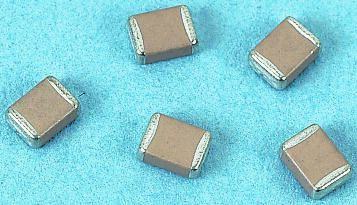
 Datasheet下载
Datasheet下载
%2022.jpg)



